How I Prepare For a Fishing Tournament
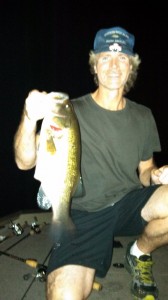 I love fishing in tournaments. The competition. There’s something about it that lights a fire inside of me. So let me tell you how I prepare for a fishing tournament.
I love fishing in tournaments. The competition. There’s something about it that lights a fire inside of me. So let me tell you how I prepare for a fishing tournament.
When I compete, I do it with everything in me. I hate losing. I don’t even like coming in 2nd! It’s like I was made for competition 🙂
So you can imagine that when I have an upcoming fishing tournament, I do whatever I can to prepare for it, to make sure that when the day of competition comes, I’m as prepared as I possibly can be.
But what does that involve? What steps do I take to prepare myself and my gear, to make sure that I can be focused and do my very best when I hit the water on tournament day?
Well, let’s talk about that.
First, before I ever hit the water for the tourney, or even to practice for it, I try to make sure everything is organized. This applies to my rods, reels, tackle items, and my boat itself.
I keep my boat clean and organized, with no clutter and everything neatly in its place. Yes, I am a neat freak. But that helps me to stay in top of things and know where everything is so I can grab something in a split second when I need it. The last thing I want to be doing is hunting for something in my boat during a tournament, when every second counts. That’s the ultimate in frustration for me.
A Place for Everything and Everything in Its Place
All of this starts with keeping my boat clean. Yes, that even means no dirt on the carpet! Dirt on the carpet ends up on my gear and in my reels, and it also wears the carpet out prematurely. So, yes, I even rise the soles of my shoes off before getting into my boat. It helps to keep the boat clean, even when we launch from dirt parking lots.
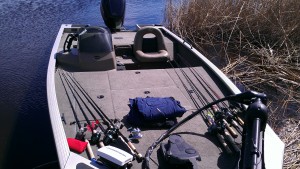 Next, my rods and reels have to be in order. I want to make sure that I have good line on them, especially for a tournament. And I want to make sure that my reels are well maintained. This means that I take them all in the house during the winter and do annual maintenance on them… all of them.
Next, my rods and reels have to be in order. I want to make sure that I have good line on them, especially for a tournament. And I want to make sure that my reels are well maintained. This means that I take them all in the house during the winter and do annual maintenance on them… all of them.
Gears get grease, bearings get oil and dirt gets removed from the exterior with an old toothbrush, a cotton swab and a soft rag or paper towel. Any reels that aren’t operating 100% up to par get boxed up and shipped back to the manufacturer, for repair or replacement. I don’t consider myself to be a reel technician, so if I run into something I don’t know how to deal with, I let the pros handle it 😉
Now that I know my rods, reels and line are in proper order, I go through my baits. First, I check the soft plastics in my boat, to see what I might be running low on. I know which baits I throw most often, so I know that those are the ones that I am most likely to run out of the quickest.
I pull each Plano box from the boat storage compartment and do a quick visual check, noting which ones are running low. Sometimes I’ll even make a short list on paper, so if there are things that I need to order, I’ll know what they are when I sit down at my computer to order them.
When it comes to soft plastics, I rarely but big name brands any longer. I don’t like the prices of most of them and I have found excellent replacements for them, for far less money. And these less expensive replacements perform every bit as well as the more expensive name brands, without the fancy packaging or higher cost.
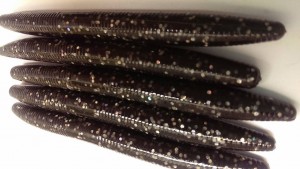 My goal with the baits is to order and keep enough of them in my cabinets to prevent me from having to order them immediately prior to a tournament. The last thing I want is to be in need of a specific bait and not be able to get it in time for an upcoming tournament. So when I order soft plastics, I buy them by the 50 or 100 pack. It’s cheaper in the long run and it means that I have enough to last me a while before having to order them again.
My goal with the baits is to order and keep enough of them in my cabinets to prevent me from having to order them immediately prior to a tournament. The last thing I want is to be in need of a specific bait and not be able to get it in time for an upcoming tournament. So when I order soft plastics, I buy them by the 50 or 100 pack. It’s cheaper in the long run and it means that I have enough to last me a while before having to order them again.
So once I know which baits are running low, I go to my cabinet and pull those baits out and restock my Plano boxes, making sure that I have enough of each size and color that I will be needing. When the boxes are full, they get placed back into the storage compartment, in the exact place where they were taken from.
For other tackle items, such as hooks or other terminal tackle, I go through the corresponding Plano boxes and take a mental inventory, making note of what size hooks I might be running low on, so I can pick them up the next time I make a trip to Wal-Mart or some other local tackle retailer.
When it comes to things like bullet weights, I buy them in bulk during the off season, so I never have to worry about running out during the tournament season. This is actually the case with as many tackle items as possible. Winter is the time to prepare when it comes to stocking up on items that you know you’ll use a lot of once the season starts, saving you the headache of running low or running out of something when you should be going fishing!
Hard baits and wire baits, such as crankbaits, topwater baits, spinnerbaits, jigs, buzzbaits or bladed jigs also get stocked up during winter, if at all possible. I make most of my own spinnerbaits, buzzbaits, jigs and bladed jigs, so that’s easy. I just make what I think I’ll need for the upcoming season and then throw a few baits together right before a tournament if I happen to discover some new color combination that I might need.
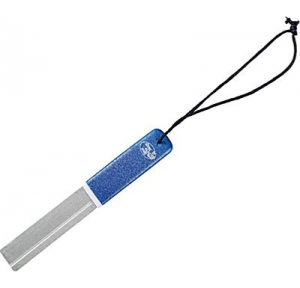 Hooks on all of these baits are kept sharp at all times and I also keep a small diamond hook file in the boat so I can touch up any hooks that might become dull while I’m on the water. Believe me when I tell you that this tiny little piece of equipment is a life saver. I’m anal about checking my hook points and if it doesn’t meet my definition of sharp, it gets filed right away. If it can’t be sharpened in very short amount of time, it comes off and gets replaced ASAP.
Hooks on all of these baits are kept sharp at all times and I also keep a small diamond hook file in the boat so I can touch up any hooks that might become dull while I’m on the water. Believe me when I tell you that this tiny little piece of equipment is a life saver. I’m anal about checking my hook points and if it doesn’t meet my definition of sharp, it gets filed right away. If it can’t be sharpened in very short amount of time, it comes off and gets replaced ASAP.
Dull hooks mean lost fish. And lost fish don’t win tournaments! So do yourself a huge favor and get into the habit of checking your hooks many times over the course of a day. You’ll be amazed at how many lost fish you can prevent by doing this one simple thing.
Before a tournament, I will always go through my baits, especially the ones I plan on using to start the tourney, and check the hook points. I do this by dragging the hook point down the length of my thumbnail, using only extremely light pressure. If it readily digs in and won’t slide, it’s sharp enough, If it takes any effort at all to get it to catch or stick, it’s not sharp enough.
Using this little hook hone is by far the quickest, easiest way to sharpen my hooks. And if I can’t get it sharp enough to meet my standards within 15-20 seconds, it comes off and a new hook takes its place.
For items like spinnerbaits and buzzbaits, if I know ahead of time that I’ll be using a specific bait, I’ll make sure I have a few of them ready to go, and I will check the hooks ahead of time. This way I know that when I reach for a bait to tie it on, the hook is already sharp and ready to stick some fish and not let go.
This is usually the case when I prepare for night tournaments. I know that I will usually be throwing big, black spinnerbaits, with large Colorado blades. So I make up a half dozen of them in advance and make sure the hooks are needle-sharp and I also add soft plastic trailers to each bait, with a drop of super glue to hold the trailer in place. No rummaging through a tackle box in the dark, looking for a spinnerbait. I just reach into the pile of new baits and grab one. 15 seconds later I’m back to fishing.
Staying organized is one of my keys to keeping an edge when I compete. If my boat and my tackle are organized, then I can focus on finding and catching fish, not wasting time trying to find stuff during a tourney. Searching through every compartment and tackle box during a tournament, looking for something that you “just know is in the boat somewhere”, is a huge time killer and it adds frustration to your day, which can break your concentration and cause you to fish less efficiently.
Everything counts. It’s all part of the equation when it comes down to what you put on the scale at the end of the day.
Now, all of what I’ve talked about so far is stuff that I do on an ongoing basis. So let’s talk about what I do the day or night before a tournament, in preparation for that next day.
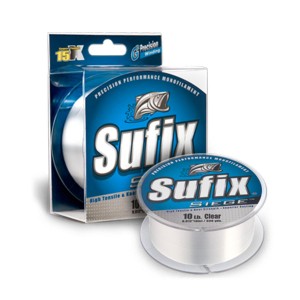 First, I check the line on all of my rods and reels. I want to make sure none of them are running low. I also want to make sure the line isn’t dry or brittle. I want it to be supple and in excellent condition. I also look for spots where there might have been a kink in the line from a previous trip. Anything bad means stripping the line and spooling up with fresh line! Remember, your line is the only connection between you and the fish. You don’t want it to be a weak link!
First, I check the line on all of my rods and reels. I want to make sure none of them are running low. I also want to make sure the line isn’t dry or brittle. I want it to be supple and in excellent condition. I also look for spots where there might have been a kink in the line from a previous trip. Anything bad means stripping the line and spooling up with fresh line! Remember, your line is the only connection between you and the fish. You don’t want it to be a weak link!
Maybe you’re wondering what kind or brand of line I prefer. I’ll actually be discussing that in more detail in a future blog post, but let me just touch base really quickly and talk about a line that I started using late in 2013, that has become a staple in my arsenal. It’s called Sufix Seige.
I discovered it completely by accident. I’ve been using Berkley Big Game on almost all of my baitcasting gear for close to 20 years, maybe even longer than 20 years. It has never let me down and is super tough. I’ve rarely had it break, and when I did it was usually my own fault.
But one day during a trip to Dick’s Sporting Goods, I was looking at line and the Sufix Siege caught my eye. It wasn’t necessarily the packaging that caught my attention. It was the line itself. First of all, it was a smoke green color. That really appealed to me because it wasn’t bright and gaudy, but it also wasn’t impossible to see under normal lighting. The way it was wound on the spool also looked unique. It was just super smooth-looking.
The price wasn’t too bad, either, at somewhere around $7 for a 300 yard spool. And I happened to have a coupon or gift card to use at the time, so buying it to try wasn’t going to cost me much, if anything. So I bought one spool of the 17 lb. test and gave it a shot.
To say I was impressed with it would be a gross understatement! This line was silky smooth to handle, with almost no memory, but yet it had a hard finish that seems to make the line very abrasion resistant. It’s like the best of both worlds combined! I spooled it onto two of my rods that I use for spinnerbaits and gave it a good workout.
My first impression on the water was that it added almost 20 percent to my casting distance! No exaggeration whatsoever. It increased my casting distance by a large margin without making any adjustments to my reel whatsoever. The next thing I noticed was how well it handled on the reel. Very little memory or coiling. It was easy to tie knots with too, with no binding or kinking. So far so good!
The final tests would be catching fish and putting it to the test around heavy cover, like rocks and logs. And let me say that it passed all of these tests with flying colors. I’ve now been fishing with Sufix Siege for 1 1/2 seasons and it’s on over half of my baitcasters now. Probably more like 75% of them. It has treated me very well, with absolutely no break-offs and no knot failures.
And because I like it so much, I now make sure I have 17 lb. and 14 lb. test in my cabinet, ready to spool onto my reels when I need it. If you’ve never tried Sufix Siege line, I highly recommend trying it!
So, back to my day-before preparation
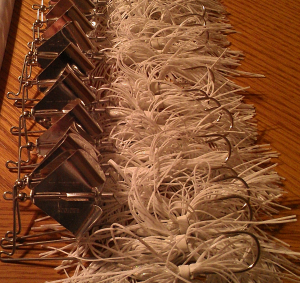 After checking all of my line and re-spooling those rods that need it, I then get out the baits that I plan on starting the day with (or night if it’s a night tourney). I always have an idea as to how I want to start the tournament off, so I tie on baits that fit into that plan. I will typically start off with between 6 and 8 rods on the front deck, with the baits tied on that I think will be working under a variety of conditions.
After checking all of my line and re-spooling those rods that need it, I then get out the baits that I plan on starting the day with (or night if it’s a night tourney). I always have an idea as to how I want to start the tournament off, so I tie on baits that fit into that plan. I will typically start off with between 6 and 8 rods on the front deck, with the baits tied on that I think will be working under a variety of conditions.
Sometimes this process of selecting the right baits and tying them all on can take me a couple of hours. And then once I’m finished with that, I go through the rest of the boat and make sure I have everything else in order, double-checking the amount of gas in my tank, making sure the onboard battery charger is plugged in, checking the batteries in my flashlights, etc. It’s all part of how I prepare for a tournament.
So as you can see, it’s about more than just tying on a few lures and showing up at the lake the next day, hoping you have what you need and hoping to catch some fish. Being prepared means staying on top of a lot of different things at all times, making it easier to focus on catching fish when tournament day arrives.
This is easier for some people than for others, depending on your personality type, but it’s something that we have to have a handle on if we want to stay sharp and focused on the water.
So I hope this helps you to learn how to prepare for a fishing tournament, or at least how I prepare for a fishing tournament. It works for me. If you take this info and adapt it to what works for you, it will help you to have an edge when tournament day comes.
For now,
Fish On!
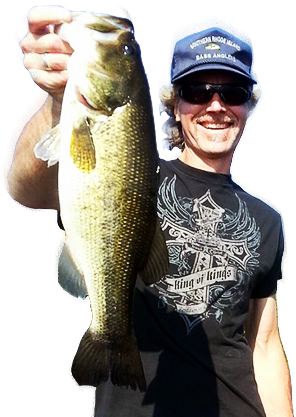



Richard Fisher
I love fishing in tournaments too, your article is great, give me more motivation to take it in new year.